For our last class of the session, we explored a circular theme to represent the end of one year and the beginning of a new year. The 1s and 2s classes began with different types of ball painting. We used golf balls for children who aren’t accustomed to marbles yet, and introduced marble painting to kids whose parents felt comfortable with such small objects.
The kids used spoons to roll the balls in paint and scoop them into their trays. Next, they began to shake and tip the trays to make tracks on their paper.
Stirring the balls around and shaking glitter onto them was also a major part of the experience.
As the children began to collect new tools off of the shelf, the teachers brought out large paper to continue their exploration.
We even tried the ball painting on a large scale, where the kids collaborated to get the balls rolling.
As the kids began to move around the studio, we had some more exciting circular activities to investigate.
We tried out our new “spinner art” machine that spins the paper around really fast while the children added drops of paint to the moving paper. The machine came with squeeze bottles, but we first tried using our eye droppers with watered down tempera paint to help develop fine motor skills.
Here is an example of a finished spin art design!
While some of the children focused on the spin art, others were drawn to the pendulum painting, set up over the floor. We hung a string and plastic cup (with a small hole at the bottom) from the ceiling to act as a pendulum. The kids squirted watered down tempera paint into the cup and swung the cup around in circles to create circular and oval drip designs. The floor was covered with a painting that had been previously sprayed with watercolors, so the design overlapped the blotchy watercolor effect. One group of kids began to pass the cup back and forth, creating a cooperative painting game!
Before getting messy with the ball painting, the 3s/4s classes worked on a more crafty project for the new year… a “wish catcher.” They began by drawing a design onto a pre-cut poster board with holes punched into it. While they were drawing, the teachers asked them about what types of wishes they had for the new year and helped them write down their wishes. Some kids wished for snow, or to play with friends, and one even wished for a chainsaw (which it turns out he actually got for Christmas!)
After drawing on the poster board, the kids practiced their fine motor skills by “sewing” yarn in and out of the holes.
After sewing, the teachers helped the kids apply clear contact paper to the middle of the hoops so they could create a “stained glass” collage (they also made sure to stick their wishes into their collages).
Here is one of the finished “wish catchers” hanging in the window. Maybe they will help to manifest all of the children’s hopes and dreams for the new year. Happy New Year!!!
































































































































































